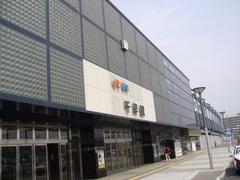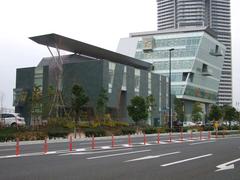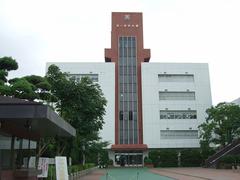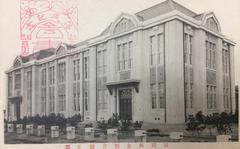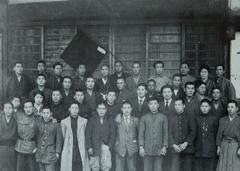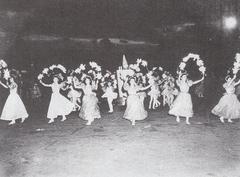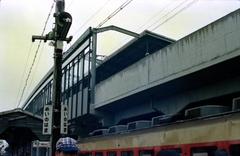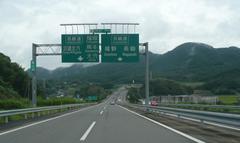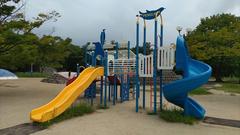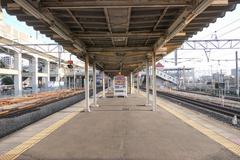
Hashimoto Station Visiting Hours, Tickets, and Travel Guide – Fukuoka, Japan
Date: 04/07/2025
Introduction: Hashimoto Station – Your Gateway to Fukuoka’s Southwest
Hashimoto Station (橋本駅), the western terminus of the Fukuoka City Subway Nanakuma Line, is a modern transit hub serving both local commuters and international travelers. Since its opening in 2005, Hashimoto Station has played a crucial role in connecting Fukuoka’s southwestern districts to the bustling city center, while also providing seamless access to major attractions, cultural experiences, and vibrant neighborhoods. Its barrier-free underground design, bilingual signage, and proximity to diverse points of interest make it an ideal starting point for exploring Fukuoka’s unique blend of tradition and modernity (Fukuoka Subway Official).
This comprehensive guide covers everything visitors need to know about Hashimoto Station, from operating hours and ticketing to nearby attractions, accessibility, and practical travel tips. Whether you are a daily commuter, a history enthusiast, or a cultural explorer, understanding the offerings and connectivity of Hashimoto Station will ensure a smooth and enjoyable journey (Fukuoka City Official Tourist Guide).
Table of Contents
- Overview and History
- Station Layout and Facilities
- Visiting Hours and Ticketing
- Accessibility and Safety
- Special Events and Cultural Experiences
- Nearby Attractions and Day Trips
- Practical Visitor Tips
- Frequently Asked Questions (FAQ)
- Conclusion
- Sources and Further Reading
Overview and History
Hashimoto Station is located in Nishi-ku, Fukuoka, and opened on February 3, 2005, to support the city’s rapid growth and improve regional connectivity. The Nanakuma Line links the station directly to Tenjin-Minami, facilitating access to Fukuoka’s commercial core. The station’s introduction has transformed its surroundings from suburban and semi-rural landscapes into a lively residential and commercial hub, reflecting the city’s strategic urban planning and decentralization efforts (Fukuoka Subway Official).
Station Layout and Facilities
Hashimoto Station is an underground facility featuring a single island platform serving two tracks. Its design prioritizes accessibility, safety, and convenience:
- Barrier-Free Access: Elevators, escalators, and tactile paving ensure ease of movement for all travelers.
- Bilingual Signage: Japanese, English, and some Korean/Chinese directions are available.
- Modern Ticketing: Multilingual ticket machines accept cash and IC cards (SUGOCA, nimoca, Hayakaken).
- Amenities: Clean, accessible restrooms; baby-changing facilities; coin lockers; free Wi-Fi; waiting areas; and CCTV security systems.
- Universal Design: Wide gates and step-free routes accommodate wheelchairs, strollers, and travelers with mobility needs (Fukuoka Subway Accessibility).
Visiting Hours and Ticketing
- Operating Hours: Approx. 5:30 AM to midnight daily (schedule may vary on weekends/holidays, check official timetables for details) (Fukuoka Subway Timetable).
- Ticketing Options:
- Single-ride tickets (¥210–¥340, depending on destination, via ticket machines)
- Rechargeable IC cards (SUGOCA, nimoca, Hayakaken; accepted on subways and buses)
- 1-Day Subway Pass (¥620 adults, ¥310 children; for unlimited subway rides) (Fukuoka Subway Pass Info)
- Fare Adjustment Machines: Located near fare gates for correcting ticket prices before exiting.
Accessibility and Safety
Hashimoto Station is committed to universal design:
- Step-free routes via elevators and ramps
- Tactile paving for the visually impaired
- Wide ticket gates for wheelchairs and strollers
- Accessible restrooms
- Trained staff for assistance
- CCTV surveillance and emergency intercoms throughout the station
Special Events and Cultural Experiences
While the station itself doesn’t host large events, it offers convenient access to Fukuoka’s vibrant festival scene:
- Hakata Gion Yamakasa Festival: A UNESCO-recognized event featuring float races and traditional performances in July (Hakata Gion Yamakasa Festival).
- Yatai Street Food Culture: Explore yatai (open-air food stalls) in nearby districts for authentic Hakata ramen and local delicacies (The Broke Backpacker).
- Seasonal Events: Enjoy summer festivals, fireworks, and flower displays in nearby parks (Japan in July Weather).
- Guided Tours: Fukuoka’s tourism offices and third-party providers offer guided tours of major sites, accessible via the subway network.
Nearby Attractions and Day Trips
Ohori Park & Fukuoka Castle Ruins
A short subway ride brings you to Ohori Park—an urban oasis with scenic walking paths, a central pond, and adjacent Fukuoka Castle Ruins, which offer panoramic city views and are especially beautiful during cherry blossom season (The Broke Backpacker).
Canal City Hakata
A sprawling shopping and entertainment complex featuring over 250 shops, a cinema, hotels, and the famous Ramen Stadium. Reachable by subway transfer at Tenjin (Japan RAR).
Dazaifu Tenmangu Shrine & Kyushu National Museum
Accessible via the Nishitetsu Line from Tenjin, Dazaifu Tenmangu is a historic shrine famed for its plum blossoms and cultural heritage. The nearby Kyushu National Museum presents the region’s history and art (Japan Insides).
Fukuoka Tower & Momochi Seaside Park
Fukuoka Tower offers stunning views of Hakata Bay, while Momochi Seaside Park features a popular beach and lively promenade (Japan Insides).
Shikanoshima Island
Famous for tranquil beaches and historical sites like the King of Na gold seal, it is accessible via bus and bridge (Japan Insides).
Nanzoin Temple & Munakata Taisha Shrine
Nanzoin is home to the world’s largest reclining bronze Buddha; Munakata Taisha is one of Kyushu’s key Shinto shrines, both reachable as day trips from the city (Japan Insides).
Practical Visitor Tips
- Transport: Use the Nanakuma Subway Line for direct access to Tenjin. IC cards are most convenient for fare payment (Fukuoka Subway IC Card Guide).
- Facilities: Coin lockers, free Wi-Fi, and multilingual support are available.
- Weather: Fukuoka summers are hot and humid—carry water, sun protection, and an umbrella during July (Japan in July Weather).
- Best Times to Visit: Spring for cherry blossoms, autumn for foliage, and early mornings or late afternoons for fewer crowds.
- Etiquette: At shrines, bow at torii gates and use water basins for purification.
- Local Cuisine: Don’t miss Hakata ramen, motsunabe (beef/pork offal hotpot), and mentaiko (spicy cod roe) (Japan Insides).
Frequently Asked Questions (FAQ)
Q: What are Hashimoto Station’s operating hours?
A: Approximately 5:30 AM to midnight daily.
Q: How do I buy tickets at Hashimoto Station?
A: Use multilingual ticket machines or rechargeable IC cards like SUGOCA, nimoca, or Hayakaken.
Q: Is Hashimoto Station wheelchair accessible?
A: Yes, with elevators, wide gates, tactile paving, and accessible restrooms.
Q: What attractions are near Hashimoto Station?
A: Ohori Park, Fukuoka Castle Ruins, Dazaifu Tenmangu Shrine, Canal City Hakata, and more.
Q: Is there free Wi-Fi?
A: Yes, free Wi-Fi is available throughout the station.
Q: Are there guided tours starting from Hashimoto Station?
A: Not directly, but many tours are accessible via transfers at Tenjin or Hakata.
Conclusion
Hashimoto Station stands as a model of Fukuoka’s harmonious blend of tradition and innovation. With its modern infrastructure, barrier-free design, and convenient access to top attractions and cultural experiences, the station is an indispensable gateway to the region’s history, cuisine, and vibrant community life. To further enhance your trip, download the Audiala app for real-time transit updates and personalized travel guides. Start your Fukuoka adventure at Hashimoto Station and discover the unique charm waiting just beyond its gates!
Sources and Further Reading
- Fukuoka Subway Official
- Hashimoto Station - Wikipedia
- Fukuoka City Official Tourist Guide
- The Broke Backpacker – Things To Do In Fukuoka
- Hakata Gion Yamakasa Festival
- Fukuoka Subway Pass Info
- Japan in July Weather
- Japan Insides – Best Things to See and Do in Fukuoka
- Japan RAR – Fukuoka City Museum
- Audiala App





